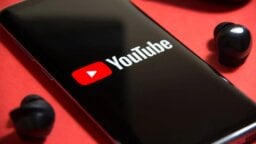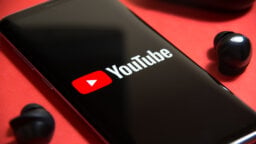
YouTube appears to believe it can near-treble the size of the annual recorded music business – so long as it’s given carte blanche to host content from labels and publishers.
This week, the online giant publicly issued some stats for the first time regarding its vision for the future of monetized entertainment.
Clearly readying itself for a music biz bloodbath following the publication of IFPI’s unimpressive ad-funded stats for 2015, a YouTube spokesperson told MBW:
“Only about 20 per cent of people are historically willing to pay for music. YouTube is helping artists and labels monetise the remaining 80 per cent that were not previously monetised.
“The global advertising market is worth $200bn. This is a tremendous opportunity.”
The two figures which really stand out there: YouTube’s hope of dominating a $200bn (TV and digital video) global annual ad market, and its belief that 80% of people will never pay for music.

These numbers are key tenets of YouTube’s argument in its current heated negotiations over new licensing deals with record labels.
MBW understands that it’s telling the majors that there’s a $450bn annual ad market out there – and YouTube is in contention to pinch anywhere up to half that figure from TV land in the future.
Labels, however, are deeply suspicious of a landscape dominated by ad-funded entertainment, whatever mammoth dollar numbers YouTube is bandying around – especially with subscription streaming in such an embryonic stage of growth.
One senior label source told MBW this week that they skeptically viewed YouTube’s wow-worthy forecasts as nothing more a “fantasy free-for-all”.
Fantasies are good fun, though – so long as no-one gets hurt or breaks any sacred vows.
So as a jolly exercise, let’s take a deeper look at these dream figures, currently being touted as a realistic prospect by the likes of YouTube boss Robert Kyncl (inset) behind closed doors.
Are they possible – or poppycock?
First, we must try and gauge the size of YouTube’s ambition. Which is especially hard, because it’s far, far greater than anything the music biz – or any single media brand, really – has ever aspired to in the past.
Clearly, even imperial-mode YouTube could never believe that it will migrate the entire $200bn annual ad spend from TV to the web on its own.
What YouTube’s essentially saying is this: There’s a gigantic ad market that hasn’t engaged with music since the days that MTV was in its pomp. If we – and our online competitors – can prove we’ve stolen TV’s audience in huge numbers, music will finally get the share of this cash that it deserves, all thanks to our on-demand online democracy.
For the purposes of simplifying our mini-experiment, let’s say YouTube can do all of this alone.
How?
Well, if it’s to convince advertising agencies that TV is truly dead, first it will need to grab the biggest audience logically possible.
Here’s a fair stab at what that would entail: 3.2bn people watched the 2014 Football/Soccer World Cup on television around the globe. It appears to be the most-watched televisual event in recent times.
The number of people on the planet currently boasting an internet connection as you read this? 3.2bn.
Ain’t that handy.
YouTube’s already at more than a billion users each month. Trebling its current audience to truly match the power of television worldwide seems a non-loony objective for Robert Kyncl and team over the next few years.
So, with this idea in mind, let’s now follow You’Tube’s ‘tremendous opportunity’ logic.
Imagine that, in the future, YouTube has secured its 3.2bn audience, and has lured over every penny of that $200bn annual ad spend. Happy days.
The next big question: how much will the music biz get?
Well, Comscore estimated that 40% YouTube visitors watched music videos in July 2011 – with Vevo accounting for 38% of total monthly viewers alone.
Yet according to Midia Research’s ‘Next Steps For Music Video‘ report, dated January 2016 – almost five years later – artist and label channels made up a lesser figure, with 35% of YouTube views.
The Midia report notes that music’s share of total YouTube views continues to decrease as each year ticks by (and suggests that labels do something about that fact – fast).
As a generous estimate in our $200bn YouTube world, then, let’s say that broadly a third of all ad-funded videos on the service are taking place on music rights-holder channels.
We’re making progress. A third of YouTube’s hallowed $200bn ad revenue figure would equal $66.67bn.
YouTube famously pays its channel partners 55% of advertising revenue as a general rule.
Applied to our $200bn YouTube ad dreamworld, and music’s $66.67bn share, the music industry would therefore be receiving $36.67bn from ‘free’ content alone per year – across, we’re guesstimating, more than 3bn ‘monetised’ consumers online.
Yet the income from YouTube and Robert Kyncl’s ‘fantasy free-for-all’ doesn’t end there.
Remember that YouTube says that, as demonstrated by comparable markets, it expects ad-funded platforms will take care of 80% of music’s potential audience – but that a further 20% of listeners will still be willing to pay something (ie. for a subscription).
Bearing in mind our 3.2bn audience figure was a bit of a stab in the dark, this is extra difficult. So let’s be conservative about it.
Apple has over 800m credit cards on file of iTunes customers. But according to cynical music biz experts, as few as 100m of these may have been used for music downloads.
Considering that 68m people are now officially paying for music streaming subscriptions, according to the IFPI (although, granted, we don’t know exactly how many are active), 100m feels a little unambitious.
Yet at least it’s something semi-solid to go on.
According to MBW analysis from earlier this week, the current per-user premium streaming payment per year stands at around $42.
At this rate, our 100m paying listeners (way below 20% of the total music audience in YouTube’s fantasy picture, by the way) would be spending a further $4.2bn on music.
Add this (retail) figure together to the $36.67bn that a $200bn-carrying YouTube should be paying out to music partners in ad money, and we have a new annual recorded music business turnover – one in excess of $40bn.
That’s nearly three times the industry’s current $15bn size.
(If our theoretical paying audience was notched up to 250m, then it would generate $10.5bn in subscription – enough extra cash to comfortably treble today’s recorded industry’s haul.)
That doesn’t even include publishing claims on compositions used in user-generated content.
High five, anyone?
Fantasies are healthy things, of course – until you start trying to carelessly manifest them in real life.
Which is a polite way of saying: we have no way of knowing whether YouTube’s $200bn ‘tremendous opportunity’ can really become a tangible cash cow for the music business in the future – or if it’s complete baloney, reliant on a strategy that will lance paid-for streaming’s promising early growth.
YouTube’s certainly painting a tempting picture for a music business that’s hit rock bottom, income-wise. So will it choose to believe in Robert Kyncl’s ad-funded promised land?
Judging by the fact Universal is on a rolling licensing contract with YouTube – and that its two fellow majors are expected to join it in the coming months – we can safely guess the majors don’t subscribe to this grand vision just yet.
What we do know is that, today – with over a billion users on YouTube each month – ad-funded platforms are delivering a pathetic ARPU (average revenue per user) of $0.70 per person per year to the music business.
$40bn seems a very far way off right now. You can certainly forgive Lucian Grainge, Doug Morris et al for humbly sticking to the idea that paid-for platforms seem a much safer bet.
In addition, YouTube has paid out a total of $3bn across YouTube and Google Play Music to the music business across the lifetime of both platforms.
The fact that Spotify has also paid out in excess of $3bn to date, yet has less than a tenth of YouTube’s monthly audience, tells its own story.
A further concerning stat: analysts believe that YouTube turned over $9bn in 2015 – all in ad dollars.
If music videos make up a third of all views on the platform, then $3bn should feasibly have been drummed up by label and artist content.
Of that $3bn, YouTube’s standard 55% payout to channel partners would therefore have equaled $1.6bn.
That’s quite some distance away from the $634m that the IFPI says was paid out by ad-funded music platforms, including YouTube, in the whole of last year.
Something, somewhere, doesn’t quite add up…






